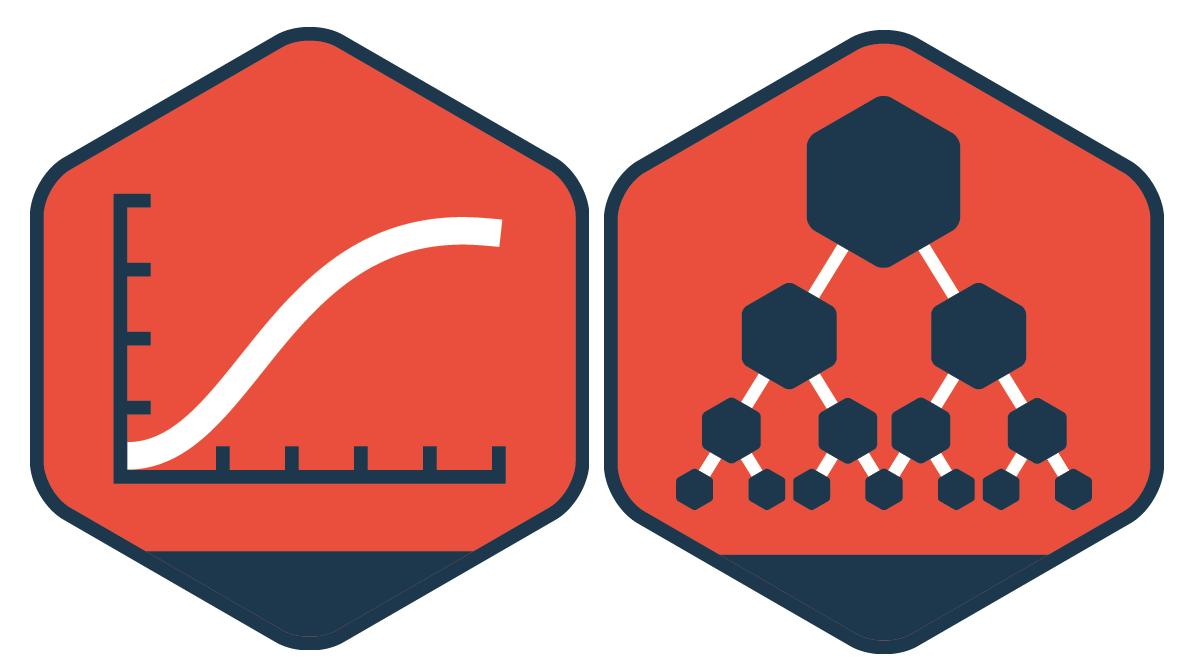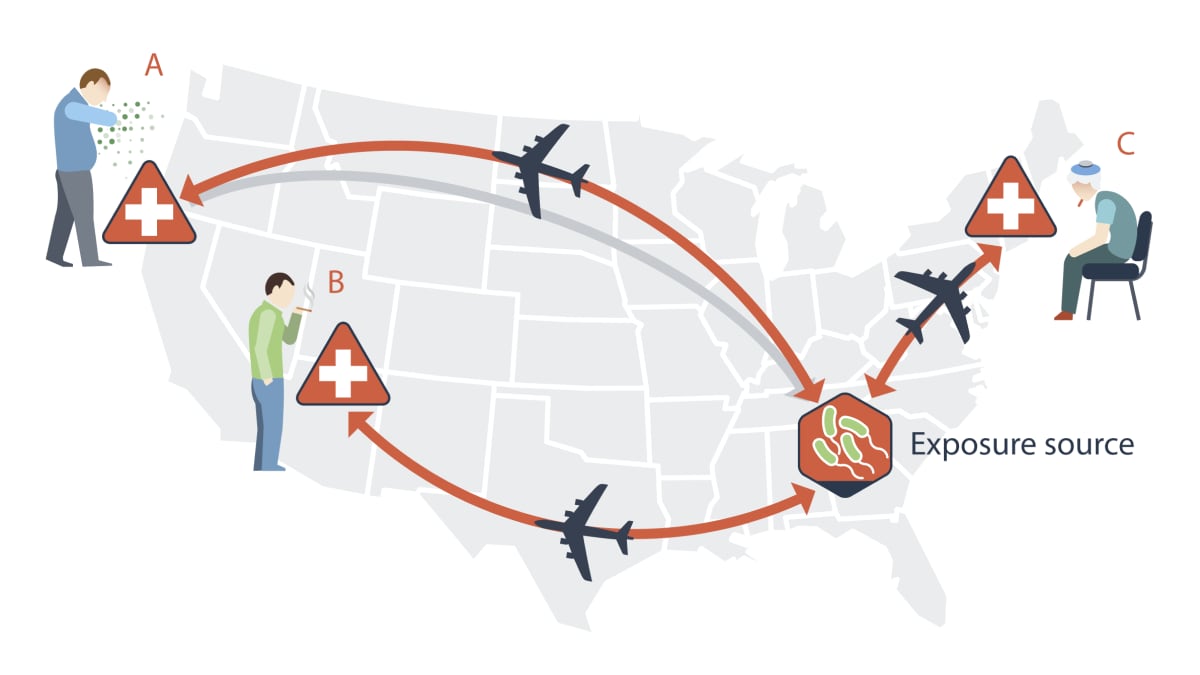Key points
- Legionellosis, which includes Legionnaires' disease, is a nationally notifiable disease.
- Strong surveillance helps to quickly identify new cases, epidemiologic links between cases, and the need for outbreak investigations.
- Outbreak investigations are critical for detecting sources of transmission and implementing control measures.

Surveillance systems
Case surveillance
CDC monitors legionellosis cases through two surveillance systems at the national level:
- National Notifiable Diseases Surveillance System (NNDSS)
- Supplemental Legionnaires' Disease Surveillance System (SLDSS)
SLDSS collects extended information on cases beyond the limited information CDC receives in NNDSS. This extended information includes exposure to travel and healthcare facilities, as well as laboratory confirmation data.
CDC uses the additional information collected in SLDSS to
- Identify outbreaks in a timely manner
- Better understand the epidemiology of legionellosis
- Develop improved methods for prevention and response
CDC is working with partners to develop a more streamlined method of reporting that will be integrated with NNDSS. Until that new method is available, CDC will continue to use SLDSS.
Outbreak surveillance
Public health officials should report legionellosis outbreaks through the National Outbreak Reporting System (NORS). NORS is part of the Waterborne Disease Outbreak Surveillance System.
Data collection methods
Public health officials should maintain an internal system for tracking and reviewing cases of legionellosis. They should use that system to identify epidemiologic links to identify outbreaks for timely investigation.
Surveillance goals
The goals of surveillance are to
- Detect outbreaks by recognizing cases with similar locations/exposures
- Monitor and describe incidence and trends
- Understand risk factors for infection
- Identify opportunities for control and prevention
- Monitor effectiveness of interventions implemented during outbreaks
Data impact
Outbreaks of Legionnaires' disease can be difficult to detect because of
- Low attack rate
- Time interval between exposure and symptom onset
- Dispersal of people from the source of the outbreak
- Underdiagnosis of cases
Strong surveillance helps to quickly identify new cases, epidemiologic links between cases, and the need for outbreak investigations. Such investigations are critical for detecting sources of transmission and implementing control measures to prevent additional cases.
CDC's role
Within their respective jurisdictions, public health officials are best positioned to systematically track Legionnaires' disease cases and detect outbreaks. However, CDC is uniquely positioned to establish connections between cases that occur among residents of different jurisdictions.
Travel-associated cases often occur among residents of different states or countries. It takes centralized reporting to link cases to a possible common source. Timely intervention relies on timely identification of outbreaks.
For cases with out-of-state exposures, CDC will notify state health departments where the exposure took place. CDC attempts notification within one business day of receiving the report from the patient's state of residence.

Most cases of Legionnaires' disease aren't associated with a known outbreak1. However, outbreak detection is limited by availability of exposure information. Improved ascertainment and reporting of exposure information helps identify possible sources of exposure and can increase detection of outbreaks.
Data reporting
Public health officials should report all cases of legionellosis to NNDSS. Methods for reporting cases to NNDSS, usually with basic demographic information, vary by health department.
Public health officials should also report all cases of legionellosis to SLDSS. Public health officials can report cases to SLDSS using either of the following:
- A CDC legionellosis case report form
- A state-specific case report form
Data definitions
Case classifications and exposure categories are important for surveillance purposes.
- Hicks LA, Garrison LE, Nelson GE, Hampton LM. Legionellosis — United States, 2000–2009. MMWR Morb Mortal Wkly Rep. 2011;60(32):1083–6.
